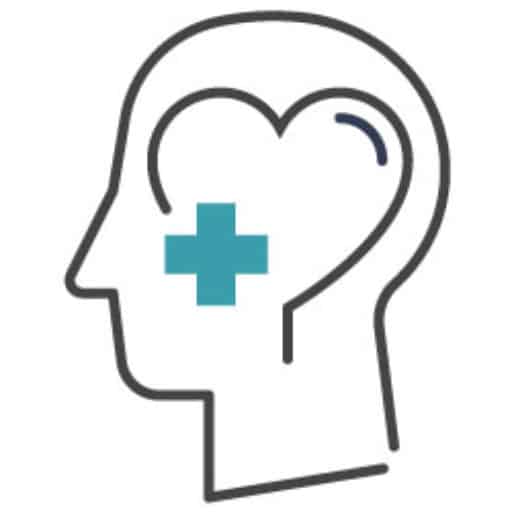Sometimes bodies react before minds catch up. Hearts race at certain sounds. Stomachs turn around specific people. Bodies communicate something important. That’s exactly what somatic therapy addresses.
Traditional talk therapy focuses on thoughts and emotions, but trauma doesn’t just live in the mind. It gets stored in bodies, too, showing up as tension, pain, anxiety or constant feelings of being on edge. That’s where somatic experiencing comes in.
What Is Somatic Experiencing and How Does It Work?
Somatic experiencing is a specific body-oriented approach to healing trauma. It follows particular protocols and requires specialized training for practitioners.
Humans often get stuck. Thoughts override natural body responses. People tell themselves to calm down instead of letting their nervous systems complete natural cycles. This trapped energy can stay in bodies for years.
SE works by helping people reconnect with their body’s natural ability to heal from trauma. The process focuses on tracking sensations, noticing what’s happening and gently helping bodies complete interrupted responses.
SE practitioners are trained to watch for signs that nervous systems are getting overwhelmed. They help people stay in the window of tolerance, where healing can happen without retraumatization.
The Connection Between Trauma and the Nervous System
Nervous systems don’t know the difference between real threats and perceived threats. Whether someone’s running from danger or thinking about a stressful meeting, bodies can have identical responses.
When something scary happens, nervous systems have three options: fight, flight or freeze. These are automatic responses that happen faster than thought. Bodies flood with stress hormones, muscles tense up and breathing changes.
Trauma happens when natural responses get interrupted or overwhelmed. Maybe someone couldn’t fight or run away, so their nervous system got stuck in that activated state. Or they had to freeze to survive, but their body never got the message that danger was over.
This is why trauma symptoms often seem to come from nowhere. People might feel anxious for no obvious reason or feel disconnected from their bodies. Their nervous system is still responding to something that happened months or years ago.
Somatic healing recognizes that people can’t just think their way out of trauma. Bodies need to be part of the healing process, too.
Techniques Used in SE
Somatic experience uses several key techniques that are gentle and go at an individual’s pace.
- Body awareness means learning to notice what’s happening in your body right now. Many people who’ve experienced trauma have learned to disconnect from their bodies as protection. SE practitioners might ask clients to notice tension in their shoulders or how breathing changes when talking about certain things.
- Grounding techniques help people feel more connected to the present moment. This might involve feeling body weight in chairs, noticing colors and textures in rooms or doing simple movements.
- Tracking involves following sensations, emotions or impulses as they move through the body. People aren’t trying to change anything — just noticing what’s there. Sometimes this leads to natural movements that help discharge stuck energy.
- Titration means taking things in small, manageable pieces. Instead of diving into traumatic memories, SE works with tiny bits of activation that nervous systems can handle.
- Pendulation involves noticing how nervous systems naturally move between activation and calm. Even during anxiety, there are usually moments of relief. SE helps people notice and expand those moments.
How Somatic Therapy Differs From Talk Therapy
Talk therapy focuses on understanding what happened, processing emotions and changing thought patterns. People spend sessions talking about experiences and feelings.
Somatic counseling starts with what’s happening in bodies right now. People might talk about experiences, but the focus stays on noticing how their bodies respond to memories. Healing happens through physical sensations and nervous system regulation, not just insight.
In SE, people aren’t necessarily trying to remember more details. Sometimes people have been telling their trauma story for years without feeling better. SE recognizes that the story isn’t always the most important part — it’s how trauma affects their nervous system today.
The pace is often slower. While talk therapy might process lots of material in one session, SE takes its time. People might spend sessions learning to notice the difference between feeling tense and feeling relaxed.
Many people find that combining somatic approaches with talk therapy gives them the best results. Cognitive work helps them understand experiences, while somatic work helps bodies actually feel safe.
Conditions SE Is Commonly Used to Treat
SE can help with lots of different trauma-related issues. A 2023 study with breast cancer survivors showed that eight weeks of Somatic Experiencing (R) intervention improved well-being and reduced trauma symptoms. It’s not just for people who’ve experienced major traumatic events; it can also help with “developmental trauma” or ongoing stress.
- PTSD is an obvious fit for SE. People with PTSD often struggle with hypervigilance, flashbacks and feeling unsafe in their bodies. SE helps nervous systems learn that danger is over.
- Anxiety disorders often respond well to somatic approaches. When people understand that anxiety is partly a nervous system response, working with bodies can be effective.
- Depression sometimes involves the nervous system getting stuck in shutdown mode. SE can help gently reactivate systems and restore aliveness and connection.
- Chronic pain conditions often connect to trauma and nervous system dysregulation. When bodies are constantly braced for danger, muscles stay tense and pain persists.
- Sleep problems, panic attacks, digestive issues and relationship difficulties can all be connected to nervous system dysregulation. As nervous systems heal, many symptoms naturally improve.
Finding a Certified Somatic Experiencing Practitioner
Not everyone who uses the term “somatic therapist” is specifically trained in Somatic Experiencing. SE is a particular method with specific training requirements.
SE practitioners go through extensive training that takes several years to complete. They learn techniques and how to track nervous system responses and work safely with trauma. When looking for a somatic therapist, ask about training and experience. Good practitioners should be licensed mental health professionals in addition to their SE training.
Many SE practitioners integrate other approaches. Some combine it with talk therapy; others include movement or other body-based techniques. The important thing is finding someone who understands trauma and knows how to work with nervous systems safely.
Bodies Know How to Heal
Somatic Experiencing is based on the idea that bodies already know how to heal from trauma. People don’t need to be fixed; they just need support to let natural healing processes work.
At Restore Mental Health, healing from trauma involves both mind and body, and somatic approaches like SE might fit into recovery journeys that honor both stories and bodies’ wisdom. Contact us today to discuss available options.



